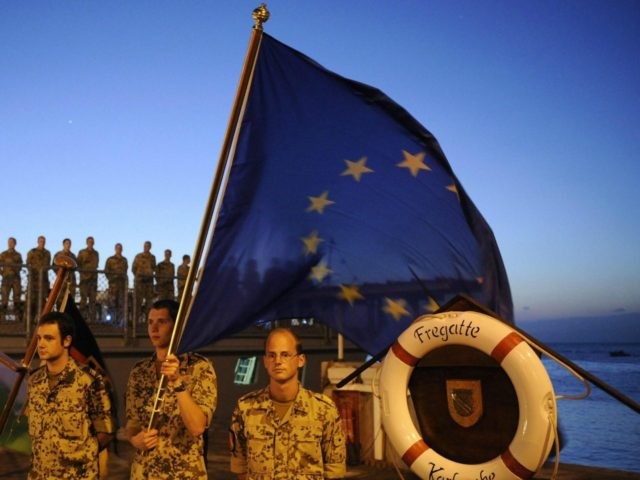(REUTERS) – The European Union’s executive wants to boost the bloc’s joint defence and security with an initial investment of 90 million euros (£77.5 million) in research, marking a turning point after years of cuts.
Defence research spending by EU governments has fallen by a third since 2006, official figures show. Now the European Commission proposes to use the EU budget to fund it.
For graphics on EU states’ defence spending, please see: tmsnrt.rs/2ctbMmP andtmsnrt.rs/2d0bYKF
A 90 million-euro plan put forward by the Commission could serve as a pilot programme for research from 2017 to 2019. The European Defence Agency hopes for a larger amount from the EU budget from 2021.
“For the first time in its history, the EU is paving the way for a substantive defence research programme,” said Jorge Domecq, chief executive of the agency, which helps EU governments develop their military capabilities.
“The 90 million euros may be modest … but it is a start. A bigger defence programme would be, for the EU, a revolution,” he told Reuters after an EU defence meeting in Bratislava, where ministers discussed the most ambitious plan in two decades for integrating European defence.
The Commission wants the European Investment Bank to be involved but the bank is barred from financing military projects. Mikolaj Dowgielewicz, the head of its Brussels office, said more defence spending would be possible if EU states changed the existing statutory restrictions.
It is already involved on a small scale in the financing of civilian elements of some dual-use goods, like software for radar.
“It would require a careful assessment of consequences for the bank, which has a reputation for developing civilian projects and that is important for the investors who buy our bonds,” Dowgielewicz told Reuters.
The EDA’s Domecq said that, while government spending on capabilities such as helicopters and ships was still paramount, backing from the EU budget was needed for innovation.
That includes so-called smart textiles, which already exist but need more development to be able to protect soldiers from hazards or transmit data to headquarters.
MORE THREATS, FEWER FUNDS
The Commission proposals pale in comparison to the $18 billion that the United States aims to spend over the next five years on new technologies. But they reflect a renewed focus on preparing for future threats, rather than relying on Washington.
As EU defence spending shrinks, the threats multiply, ranging from failing states on Europe’s southern borders to Islamist militants and a hostile Russia.
European Union states spend far less than the United States on research and manufacture of military equipment, and have only about 15 percent of the assets that Washington can deploy on the battlefield.
EU states champion national companies, often leading to duplication and wasted funds, according to EU data. In most cases, governments award defence contracts to their own firms rather than use European groups.
The EU has 19 types of armoured infantry fighting vehicle, compared with one in the United States.
“We need to overcome the fragmentation of demand at home,” Domecq said. “The mere fact that there is no plan at the European level for a next generation of European fighter aircraft is a problem.”
(Additional reporting by Jan Strupczewski; editing by Andrew Roche)

COMMENTS
Please let us know if you're having issues with commenting.